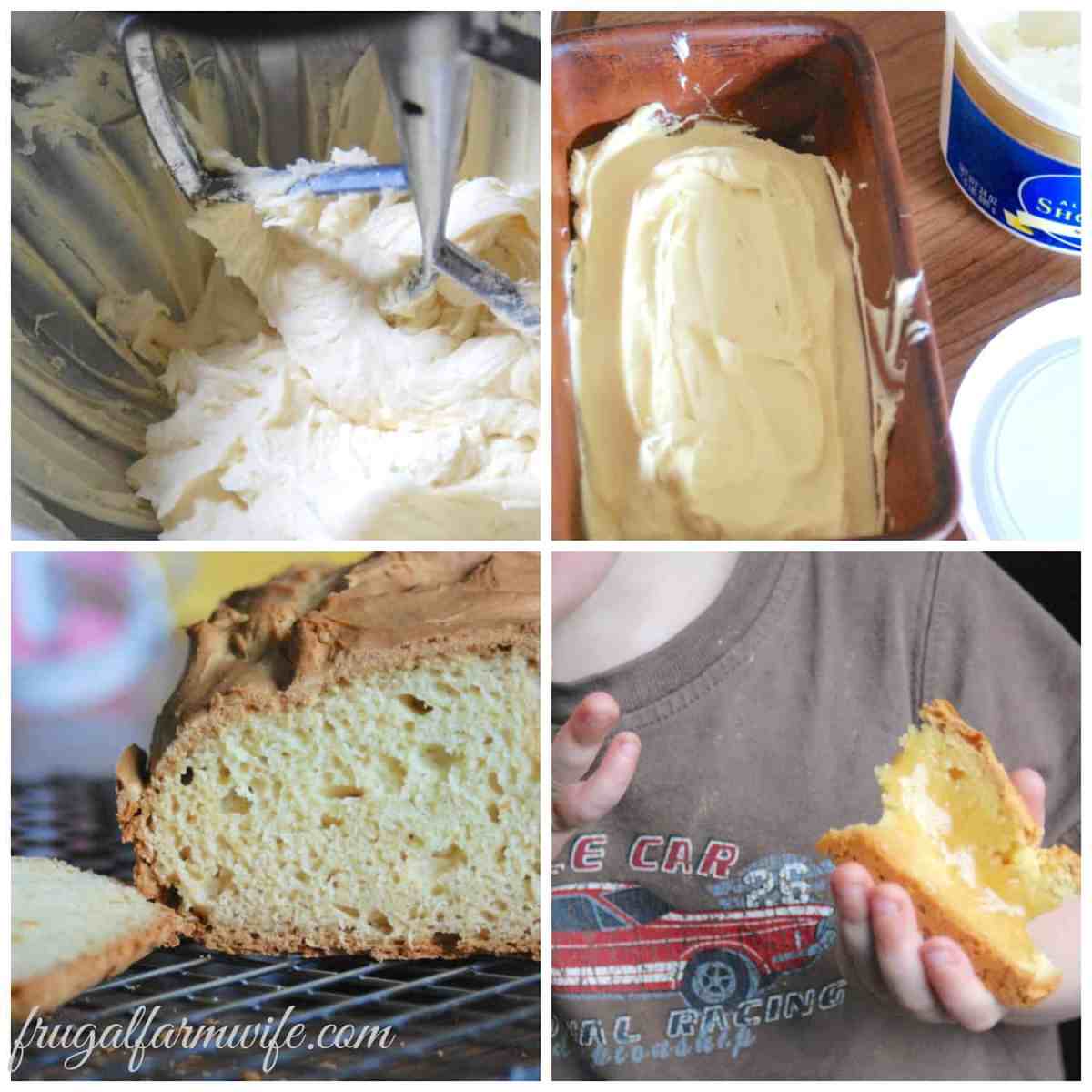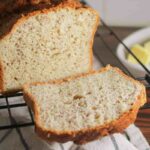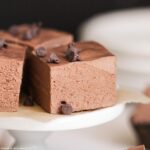Embark on a culinary journey into the world of fluffy, delicious gluten-free bread, even without the help of yeast! This comprehensive guide unveils the secrets to crafting delectable loaves and rolls, catering to those with gluten sensitivities or preferences for yeast-free baking. Discover a range of recipes, from simple everyday breads to more adventurous flavor combinations, all meticulously crafted to deliver exceptional texture and taste. Learn to master various techniques, troubleshoot common issues, and adapt recipes to suit diverse dietary needs, making gluten-free, yeast-free baking accessible and enjoyable for everyone.
We’ll explore the nuances of different gluten-free flours, the impact of various liquids, and the art of achieving the perfect dough consistency. From basic recipes using readily available ingredients to advanced techniques for incorporating nuts, seeds, and unique flavor profiles, this guide provides a complete toolkit for your gluten-free, yeast-free baking endeavors. Prepare to elevate your baking skills and delight in the satisfying results of homemade, healthy bread.
Troubleshooting Gluten-Free Yeast-Free Bread Baking
Baking gluten-free yeast-free bread presents unique challenges, often resulting in loaves that differ significantly from their gluten-containing counterparts. Understanding the common pitfalls and implementing appropriate solutions is crucial for achieving a consistently delicious and satisfying result. This section will address common problems and offer practical solutions for creating superior gluten-free yeast-free bread.
Common Problems and Solutions
A successful gluten-free yeast-free bread relies on a delicate balance of ingredients and techniques. Several issues can arise, impacting the final product’s texture, moisture content, and overall appearance. Addressing these problems proactively leads to improved baking outcomes.
- Crumbly Texture: A crumbly texture often indicates insufficient moisture in the dough. This can be remedied by adding more liquid, a tablespoon at a time, until the desired consistency is achieved. Alternatively, incorporating ingredients like applesauce or mashed banana can add moisture and improve the crumb structure.
- Dryness: Dry bread often results from using too much flour or insufficient liquid. Adding a little extra liquid, such as milk or water, can improve moisture. Using a combination of different gluten-free flours can also help. Experiment with adding a small amount of oil or melted butter for added richness and moisture.
- Uneven Rising: Uneven rising can be due to inconsistent mixing, uneven distribution of leavening agents (if any are used, such as xanthan gum or psyllium husk), or inadequate proofing time. Ensuring the dough is thoroughly mixed and evenly distributed in the pan is vital. Proper proofing time is also crucial for achieving a more uniform rise.
- Dense Texture: A dense loaf might suggest overmixing the dough, leading to the development of excessive gluten substitutes (even though the dough is gluten-free, some flour blends have properties that can be affected by overmixing). Gently fold the ingredients together instead of vigorously kneading. Using a lighter hand during mixing can prevent excessive development of these properties and result in a lighter loaf.
Adjusting Dough Consistency Based on Flour Type
The type of gluten-free flour blend significantly influences the dough’s consistency. Different blends absorb liquids differently, requiring adjustments to achieve the optimal texture. The ideal consistency should be pliable yet firm enough to hold its shape.
Image Description 1: Imagine a smooth, slightly sticky dough, similar in consistency to a thick pancake batter. This represents the ideal consistency for a blend that is primarily composed of rice flour and tapioca starch. The dough should be cohesive enough to hold its shape when gently pressed but not so stiff that it resists molding.
Image Description 2: Picture a slightly firmer dough, less sticky than the previous example. This texture is suitable for blends that contain a higher proportion of almond flour or coconut flour. The dough should still be manageable but show less tendency to stick to fingers or the bowl.
Image Description 3: Visualize a dough that is slightly more moist than the previous example but not overly wet. This would be appropriate for a blend which is heavier and more absorbent, like one incorporating teff or sorghum flour. The dough should still be moldable but slightly heavier in the hand.
Troubleshooting Guide
This table provides a quick reference for troubleshooting common issues.
| Problem | Cause | Solution | Prevention Tip |
|---|---|---|---|
| Crumbly Bread | Insufficient moisture | Add more liquid, a tablespoon at a time, until desired consistency is reached. Incorporate moist ingredients like applesauce. | Use a flour blend known for moisture retention, carefully measure liquids, and check the dough’s consistency before baking. |
| Dry Bread | Too much flour, insufficient liquid | Add more liquid (milk, water, or oil). Consider using a more absorbent flour blend. | Accurately measure ingredients and adjust based on the specific flour blend used. |
| Uneven Rising | Inconsistent mixing, uneven distribution of leavening agents | Ensure thorough mixing, distribute the dough evenly in the pan, and allow adequate proofing time. | Mix ingredients gently and thoroughly, ensuring all ingredients are evenly incorporated. |
| Dense Bread | Overmixing | Mix ingredients gently; avoid over-kneading. | Mix ingredients until just combined; avoid overworking the dough. |
Gluten-Free Yeast-Free Bread Variations and Adaptations

The versatility of gluten-free yeast-free baking allows for a wide range of delicious and adaptable bread creations. From altering shapes and sizes to catering to specific dietary needs, the possibilities are truly extensive. This section explores diverse recipes and techniques to expand your gluten-free, yeast-free baking repertoire.
Gluten-Free Yeast-Free Bread Roll Variations
Exploring different shapes and sizes significantly impacts the texture and overall appeal of gluten-free yeast-free bread rolls. Smaller rolls tend to bake faster and achieve a crispier exterior, while larger rolls offer a softer, more substantial interior. The following recipes showcase this diversity.
- Mini Gluten-Free Rosemary Rolls: These bite-sized rolls, approximately 1 inch in diameter, are perfect for appetizers or a side dish. Imagine a golden-brown crust speckled with fragrant rosemary, yielding to a soft, slightly crumbly interior. The image depicts a tray of these miniature rolls, arranged in a neat pattern, their surfaces glistening with a light sheen of olive oil. Each roll displays a perfectly formed, slightly domed top, hinting at the fluffy texture within.
- Medium-Sized Gluten-Free Cheddar & Chive Rolls: These rolls, about 2.5 inches in diameter, offer a delightful balance of size and texture. Picture plump, golden-brown rolls studded with flecks of green chives and creamy cheddar cheese. The image showcases a basket overflowing with these rolls, their warm, inviting aroma almost palpable. The cheese melts subtly into the dough, creating pockets of savory flavor.
- Large Gluten-Free Pumpkin Spice Rolls: These larger rolls, approximately 4 inches in diameter, are ideal for sandwiches or a comforting side. The image shows three large, perfectly browned rolls, their surfaces adorned with a dusting of cinnamon sugar. They boast a deep golden-brown hue, a testament to their rich pumpkin spice flavor. The soft, moist interior is subtly sweet and spiced, creating a delightful autumnal treat.
Adapting Gluten-Free Yeast-Free Bread for Specific Dietary Needs
Catering to diverse dietary needs requires careful ingredient substitutions. The following recipes illustrate how to adapt gluten-free yeast-free bread for vegan and paleo diets.
Adapting recipes to accommodate vegan and paleo lifestyles often requires substituting traditional ingredients with alternatives that maintain texture and flavor.
- Vegan Gluten-Free Yeast-Free Bread: Replace eggs with flax eggs (1 tablespoon ground flaxseed meal mixed with 3 tablespoons water per egg) and dairy with plant-based milk (such as almond or soy milk) and oil. This ensures a completely plant-based loaf that retains the same moist and fluffy texture. A simple example would be substituting the eggs in a standard recipe with this flax egg mixture and using unsweetened almond milk instead of cow’s milk.
- Paleo Gluten-Free Yeast-Free Bread: Eliminate all grains and legumes from the recipe, relying instead on alternative flours such as almond flour, coconut flour, and tapioca starch. These flours create a denser, slightly crumbly texture, characteristic of paleo baking. A key consideration would be adjusting the liquid content, as almond and coconut flours absorb liquids differently than traditional wheat flour.
Storing and Extending the Shelf Life of Gluten-Free Yeast-Free Bread
Proper storage significantly extends the freshness and quality of gluten-free yeast-free bread. Employing these methods will help maintain the bread’s texture and flavor for a longer period.
- Store bread in an airtight container at room temperature for up to 3 days.
- Freeze bread slices or whole loaves for extended storage (up to 3 months). Wrap tightly in plastic wrap and then place in a freezer bag to prevent freezer burn.
- Reheat frozen bread slices in a toaster or oven for optimal texture restoration.
Mastering the art of gluten-free, yeast-free bread baking opens a world of culinary possibilities. This guide has equipped you with the knowledge and recipes to confidently create a variety of delicious and healthy breads, from simple everyday loaves to more sophisticated creations. Remember to experiment with different flours, flavors, and techniques to discover your own signature gluten-free, yeast-free masterpieces. Enjoy the process, savor the results, and embrace the freedom of baking delicious bread tailored to your dietary needs.
Common Queries
Can I freeze gluten-free yeast-free bread?
Yes! Freezing is an excellent way to extend the shelf life of gluten-free yeast-free bread. Wrap slices tightly in plastic wrap and then foil, or use freezer bags, for optimal preservation.
What are the best gluten-free flours to use?
A blend of flours often works best. Popular choices include almond flour, rice flour, tapioca starch, and potato starch. Experiment to find your preferred combination.
Why is my gluten-free yeast-free bread crumbly?
Crumbly bread often results from insufficient moisture. Try adding more liquid, a tablespoon at a time, until the desired consistency is reached. Using a binding agent like xanthan gum can also help.
How long does gluten-free yeast-free bread last?
Properly stored, gluten-free yeast-free bread generally lasts 3-4 days at room temperature. Freezing significantly extends its shelf life.


